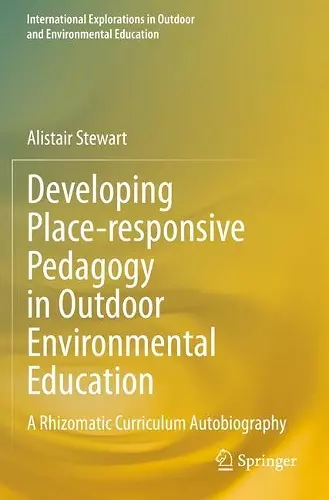Developing Place-responsive Pedagogy in Outdoor Environmental Education
A Rhizomatic Curriculum Autobiography
Format:Paperback
Publisher:Springer Nature Switzerland AG
Published:26th Feb '21
Currently unavailable, our supplier has not provided us a restock date

This book is a rhizomatic curriculum autobiography that charts the author’s efforts to develop and promote Australian outdoor environmental education practices that are inclusive of, and responsive to, the places in which they are performed. Joining philosophical concepts created by Gilles Deleuze and Felix Guattari with William Pinar’s autobiographical method for curriculum inquiry, the author (re)considers the interrelated concepts, contexts and complex conversations with colleagues, students and others that have shaped his approach to curriculum, pedagogy and research for fifteen years or more. Emphasising the complexity of developing curricula and pedagogies that engage, in a respectful and generative way, with the natural and cultural history of the Australian continent, the author explicates and enacts his attempts to think differently about the cultural, curricular and pedagogical understandings that inform the practices of Australian outdoor environmental educators.
Outdoor environmental education in Australia has historically been influenced by imported universalist ideas, particularly from the USA and the UK. However, during the last two decades a growing number of researchers in this field have challenged the applicability of such taken-for-granted approaches and advocated the development of curricula and pedagogies informed by the unique bio-geographical and cultural histories of the locations in which educational experiences take place. As this book demonstrates, Alistair Stewart is prominent among the vanguard of Australian outdoor environmental educators who have led such advocacy by combining practical experience with theoretical rigour.
“This book is therefore recommended for teachers of all kinds; not only those working in environmental education but anyone wanting to break free of disciplinary silos. It can be read, not just as an inspiring introduction to place-based teaching and learning, but as a route in to working with theories that are particularly valid for our contemporary predicament regardless of our teaching context.” (Kay Sidebottom, Australian Journal of Environmental Education, April 11, 2024)
“I will be placing this book on the reading list of the Outdoor and Experimental Learning masters course … . This is a great tool for researchers, students and staff alike, to think landscape and waterscape with. I’ll be recommending they read it all the way through, in whichever order the chapters float to the surface. It will certainly challenge them, but I hope they will challenge the book in return, with the affirmative and empathetic critique it deserves.” (Jamie Mcphie, Journal of Adventure Education and Outdoor Learning, October 9, 2020)
“This book is a must-read. It is an inspiring and thoughtful piece of work that alloutdoor environmental educators (both practitioners and researchers) should take notice of. It experiments with concepts and reflects upon Australian stories of natural and cultural history, providing an assemblage as unique as the Australian landscape itself.” (Scott Jukes, Journal of Outdoor and Environmental Education, Vol. 23, 2020)
ISBN: 9783030403225
Dimensions: unknown
Weight: unknown
189 pages
2020 ed.